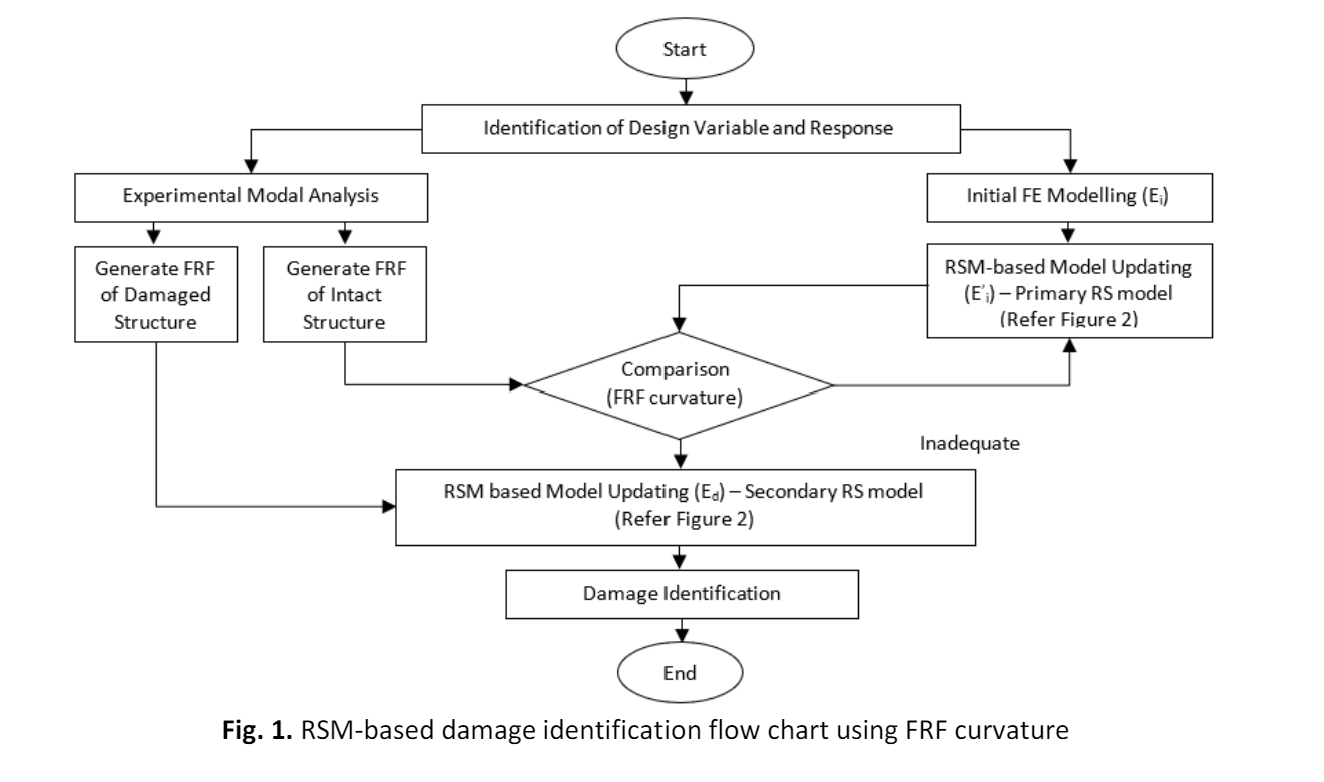Model Updating for Damage Identification: Leveraging Response Surface Methodology and Frequency Response Function Curvature
DOI:
https://doi.org/10.37934/aram.116.1.169182Keywords:
Structural health monitoring, experimental modal analysis, response surface methodology, FRF curvatureAbstract
The limitations of the classical finite element (FE) model updating-based damage identification method, described as having convergence problems and a high computing cost, served as a catalyst for this investigation. Unlike traditional FE models, response surface methodology (RSM) employs explicit mathematical functions to describe the input-response relationship, offering a clear and concise representation. However, the current application of RSM is restricted to a few responses and updating parameters, and unresolved issues persist, including symmetrical damage location and false damage detection. In this study, a new RSM approach is introduced, using FRF curvature as the response. The effectiveness of the proposed method is demonstrated through an experimental modal analysis of a free-free aluminium beam, employing four different Design of Experiment (DOE) techniques: a minimum-run resolution V (CCDmrv) design and a half-fractional (CCDhalf) design using Central Composite Design (CCD), Box-Behnken design (BBD), and D-optimal design. The research systematically evaluates and compares the performance of these DOE techniques in identifying damage. Overall, the results highlight the success of the RSM method, particularly CCDhalf, D-optimal and BBD, in effectively identifying damage.
Downloads



























